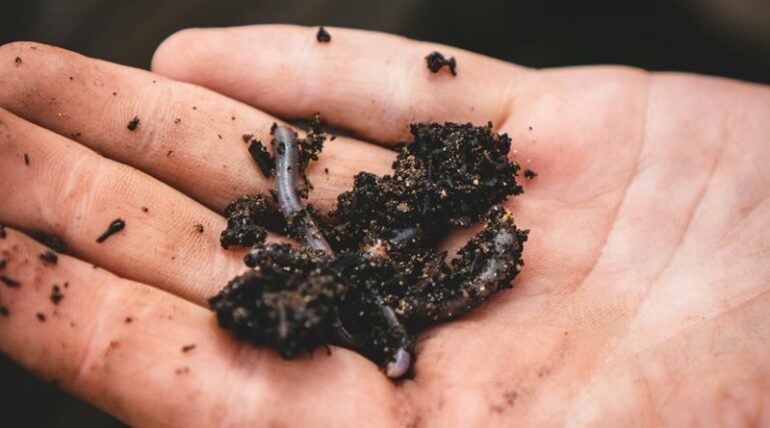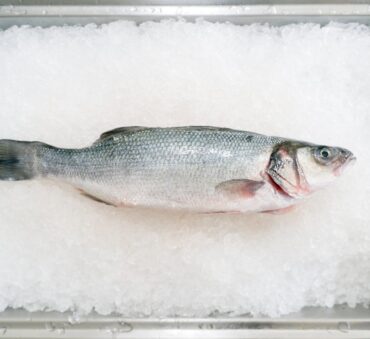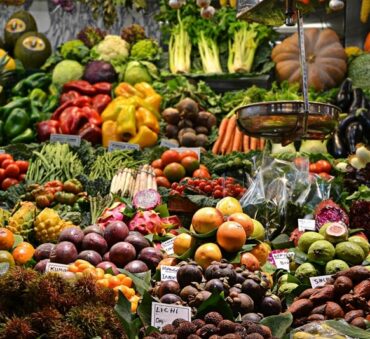Did you know that one-third of the world’s food is wasted annually?
Unfortunately, discarding food has many negative consequences that exceed the immediate loss of food itself; it represents economic losses throughout the supply chain, a missed opportunity to reduce food insecurity, and long-lasting environmental issues.
As reducing food waste becomes a high priority in sustainability efforts, a unique approach has emerged to minimize its implications: vermicomposting food.
But what is vermicomposting, and how does it compare to traditional composting? Keep reading to learn more about this technique, where we’ll discuss how to create and maintain your own vermicomposting system and the concept of vermicomposting on a commercial scale.
Key Takeaways
- Vermicomposting reduces landfill use, lowers greenhouse gas emissions, enhances soil fertility, supports plant growth, and offers economic opportunities, making it a valuable waste reduction strategy.
- To maintain a healthy vermicomposting system, you must balance brown and green materials, regulate temperature, keep bedding moist, and empty excess liquid from the bin. If not, you could attract pests, experience bad odors, and affect the progress of your vermicompost.
- There are various ways you can use your harvested vermicompost, such as sprinkling it on the surface of soil to provide nutrients, mixing it with soil to improve soil structure, and using it in flower beds to promote growth.
- Businesses that choose to use vermicomposting as a waste reduction strategy can enjoy various environmental and economic benefits, such as waste management cost savings, reduced landfill use, and a potential new revenue stream.
What is Vermicomposting?
Vermicomposting is a type of composting that uses earthworms to break down organic material into a nutrient-rich compost. But how do worms break down food waste?
During this process, worms feed on and digest organic waste materials, excreting them in a form that plants can easily absorb. Microorganisms also play an important role in this process, breaking down complex organic compounds to make it easier for worms to digest.
Historical evidence suggests that this practice dates back centuries, being used by ancient civilizations to enhance agricultural techniques. That said, vermicomposting food wasn’t officially researched and introduced until the 1970s and has since continued to evolve and gain popularity.
This method differs from traditional composting, which breaks down organic materials over time through microbial activity. As we’ll see below, both composting and vermicomposting have unique advantages and disadvantages.
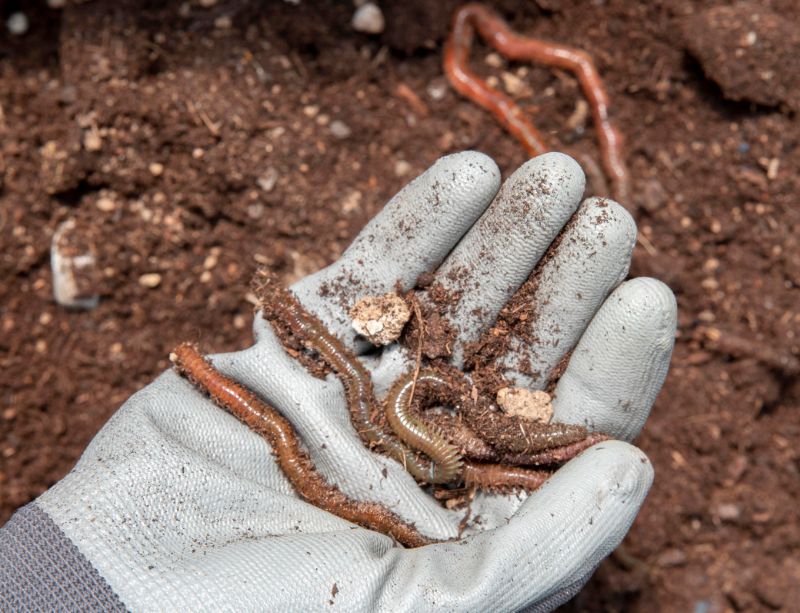
Benefits of Vermicomposting
There are many benefits to vermicomposting food, including:
- Reduced landfill waste: Vermicomposting is an efficient food waste management strategy that increases landfill diversion, therefore minimizing its environmental consequences.
- Lowers greenhouse emissions: As food waste decomposes in landfills, it produces methane, a powerful greenhouse gas that contributes to global warming. By diverting food from landfills, vermicomposting helps address this growing concern.
- Enhances soil fertility: Vermicompost can enhance soil fertility physically, chemically, and biologically, therefore improving crop yield.
- Supports plant growth: Vermicompost contains nitrogen, potassium, and phosphorus, all of which are beneficial for plant growth.
- Reduces soil pollution: Vermicompost is a great alternative to chemical fertilizers, which are harmful for the environment and can lead to soil degradation.
- Manages agricultural waste: Vermicomposting processes crop residues and recycles valuable nutrients back into the soil, making it a sustainable solution to farm waste.
- Economic opportunities: Businesses can enjoy cost savings on waste disposal and explore new revenue streams by selling vermicompost.
Which Is Better, Composting or Vermicomposting for Food Waste?
Composting and vermicomposting are both great strategies for addressing food waste. However, they have key differences that must be considered when choosing the right option for specific scenarios.
Important aspects to consider include:
- Time commitment: Vermicomposting is a quicker approach than composting, making it the better choice for time-sensitive situations. Though there are many factors that affect the overall duration, vermicomposting food typically takes 2 to 3 months, while composting takes 6 to 9 months.
- Space requirements: Compost piles are deep, while vermicomposting requires more surface space than depth. This characteristic makes composting a popular option for large-scale reduction efforts.
- Maintenance: Compost piles must be turned regularly to ensure proper aeration, while the worms in vermicomposting do all the work for you. This makes vermicomposting a less labor-intensive solution.
- Nutrient content: Vermicompost has a higher nitrogen, phosphorus, and potassium content, making it an appealing choice for plant growth and development. However, compost is also a nutrient-rich solution that is valuable in the agricultural sector.
Overall, both composting and vermicomposting are valuable solutions in the fight against food waste. That said, there are certain situations where one method may be more appropriate than the other. For instance, composting food waste is a great option for large-scale strategies due to its ability to process larger quantities in less space. Vermicomposting, on the other hand, is ideal for small spaces or indoor use, making it a valuable option for household recycling efforts.
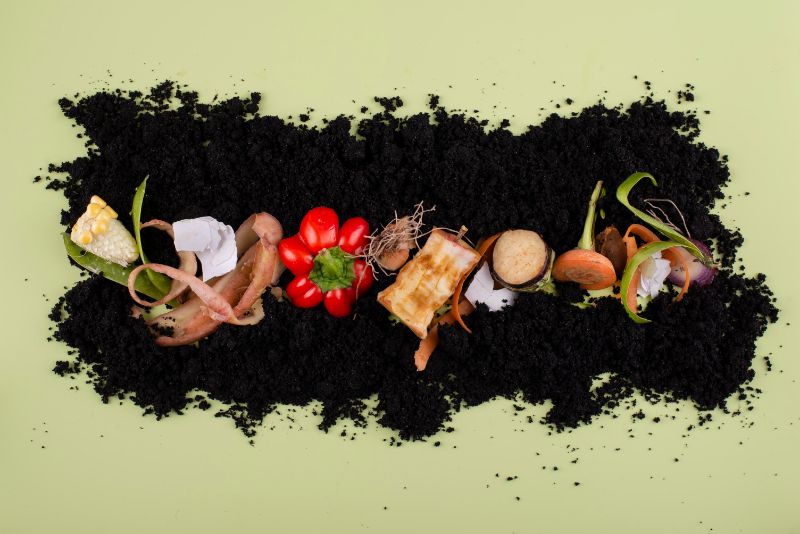
Getting Started with Vermicomposting
Follow these steps to create your own vermicomposting setup:
- Select a bin: There are multiple ways to approach vermicomposting, with different materials and sizes available to meet your specific needs. That said, vermicomposting bins should typically provide a surface area of 1 square foot for each pound of waste per week, be lightweight, have sufficient holes for ventilation, and have a system for draining excess liquid. You can buy these bins already made or make them yourself using the EPA’s guide for creating and maintaining indoor worm composting bins.
- Get worms: Not all worms are ideal for vermicomposting. For optimal results, purchase red wigglers or Eisenia fetida.
- Prepare the bin: Combine shredded paper, soil, and just enough water to dampen everything. Add the bedding to the bin, filling it about 3 inches deep and ensuring it remains loose to allow airflow for the worms. Once ready, you can add the worms to the bin.
- Feed the worms: Bury food scraps under bedding by creating a hole in the bedding, adding food scraps, and covering it to prevent fruit flies. Make sure to keep the vermicompost bin covered with a lid.
Maintaining Your Vermicomposting System
To maintain a healthy vermicomposting system, consider the following:
- Feeding your worms: Overfeeding your worms can lead to uneaten food rotting, which reduces oxygen levels in the bin and creates an unhealthy environment. As a general rule of thumb, you should not add more food scraps to the bin until your worms have almost finished the previous batch. Depending on how many worms you have, this may mean feeding them every couple of days or on a weekly basis.
- Balance green (organic) and brown (carbon) materials: Carbon, which includes shredded paper and wood chips, must continually be added to the bin to promote a healthy environment. We recommend creating a mix of 50% carbon and 50% organic material and adjusting if necessary.
- Regulate temperature: The ideal temperature for vermicomposting bins is between 55 and 80 degrees Fahrenheit. To prevent exposure to extreme temperatures, avoid putting bins in direct sunlight during the summer and keep them in a sheltered environment in the winter.
- Keep bedding moist: Your bin should be as damp as a moist sponge. While food scraps typically give the bedding enough moisture, you may need to spray water on dry areas or add more carbon if the pile is too damp.
- Empty liquid from the bin: Excess liquid, known as leachate, must be drained to prevent odors and keep worms protected. The frequency depends on the size of the bin, materials used, and moisture content, but may need to be done every couple of days or weeks, depending on your specific needs. Excess moisture, large amounts of leachate accumulated at the bottom of the bin, and foul smells are all signs that it’s time to drain the liquid.
- Prevent pests and odors: To prevent unwanted pests and odors, ensure you are covering food scraps with carbon bedding, are using the right balance of carbon and organic waste, have enough ventilation holes to promote airflow, drain leachate regularly, avoid food scraps with strong odors, maintain the right temperature, and cut food scraps into small pieces to break down faster.
- Worms trying to escape: If a large number of worms are trying to escape, it could be due to excess moisture, extreme temperatures, poor ventilation, or insufficient food. If you encounter this issue, we recommend checking each of these factors.
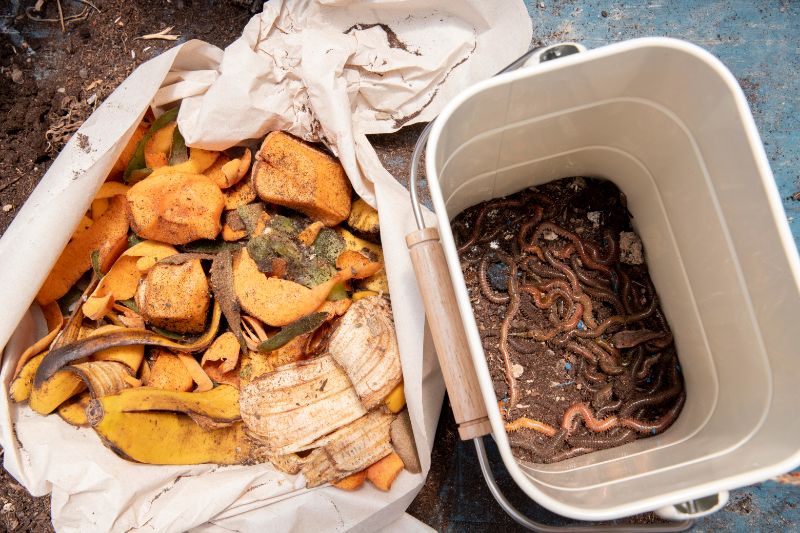
What Food Can I Compost with Worms?
Worms have a very diverse diet, making them a great solution for everyday food scraps. This includes:
- Cooked/uncooked fruits and vegetables
- Eggshells
- Coffee grounds
- Bread
- Grains
- Tea and tea bags (remove the staples)
What Foods Should Not Be Composted with Worms?
We recommend avoiding the following foods:
- Meat
- Fish
- Citrus and acidic foods
- Foods with preservatives
- Spicy or heavily seasoned foods
- Foods with strong odors that make the bin smell unpleasant (onions, garlic)
- Dairy (Proper dairy waste management can prevent odors and contamination)
- Oil (this includes disposing of cooking grease, disposing of cooking oil, and bacon grease)
Harvesting and Using Vermicompost
When your vermicompost is ready to be harvested, it should have a rich, dark brown color and a uniform texture. Another sign to be aware of is if your worms appear smaller, as it may be an indication that they need fresh bedding and food.
There are various methods you can use to harvest vermicompost, including:
- Food migration: For this method, all you have to do is move the bin’s contents to one side and add a fresh layer of food scraps and bedding on the vacant side. Over the next week or two, your worms will migrate to the new food and leave the vermicompost almost worm-free.
- Light method: Remove the lid and put the bin under a light. Since worms prefer darkness, they’ll bury themselves, leaving vermicompost at the top to be harvested. Keep repeating this process until you’ve removed as much vermicompost as possible.
- Screening method: Place a fine mesh screen over a container, place the vermicompost on the screen, and gently shake. The fine compost will fall through, leaving larger pieces and worms on the screen.
Once harvested, there are various ways you can use your vermicompost. This includes sprinkling it on the surface of soil to provide nutrients, mixing vermicompost with soil to improve soil structure, and using it in flower beds to promote growth.
If it’s not for immediate use, you should store your vermicompost in a cool, dry place in a breathable container. This ensures proper airflow and helps maintain its quality.
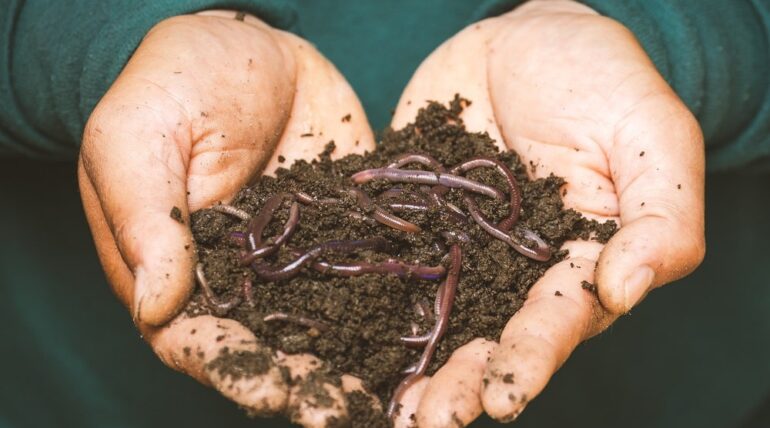
What Are the Disadvantages of Vermicomposting?
The disadvantages of vermicomposting include:
- Time: While vermicomposting food is faster than some of its alternatives, it still requires multiple months to convert into nutrient-rich vermicompost, making it an unappealing option for some individuals.
- Bad odor: If not properly maintained, vermicompost can emit a bad odor. As mentioned, there are ways to address this, such as avoiding certain food items, emptying excess liquid, and covering food scraps with brown materials.
- Maintenance: To ensure optimal results, your vermicompost pile must maintain the right temperature and moisture. While this method is generally considered low-maintenance, it does require you to monitor these two factors.
As with any waste reduction method, there are multiple disadvantages that must be considered. Anyone interested in this approach should be aware of potential challenges and upkeep, as discussed above.
Commercial-Scale Vermicomposting
Vermicomposting can also be done on a commercial scale. While the process remains the same, commercial vermicomposting handles food waste on a much larger scale than household approaches, meaning it requires specialized equipment, can process waste from various sources, and involves detailed monitoring and control of environmental conditions.
Businesses that choose to use vermiculture and vermicomposting as a waste reduction strategy can enjoy various environmental and economic benefits. Economically, they can experience waste management cost savings while producing high-quality vermicompost for sale. From an environmental standpoint, large-scale vermicomposting helps reduce landfill use, therefore decreasing pollution and minimizing methane emissions from food waste.
The Bottom Line
Vermicomposting is among the many waste reduction strategies that households and businesses can explore, providing environmental and economic benefits. That said, there are a range of options that businesses can choose from, with tailored solutions that address their specific needs and requirements.
If your business is interested in reducing its environmental footprint, we recommend considering sustainable food waste disposal services. At Shapiro, we have a range of solutions that handle waste in an environmentally friendly and cost-effective way.
To learn more about our services, contact us today.
Baily Ramsey, an accomplished marketing specialist, brings a unique blend of anthropological insight and marketing finesse to the digital landscape. Specializing in educational content creation, she creates content for various industries, with a particular interest in environmental initiatives.
